Search
Materials Selection and Design
View as
Sort by
Display
per page
01425 EXPERIENCE OF HIGHLY ALLOYED STAINLESS STEELS FOR PULP BLEACH PLANTS.
Product Number:
51300-01425-SG
ISBN:
01425 2001 CP
$20.00
01525 USE OF A ROTATING CYLINDER SYSTEM TO DETERMINE THE CORROSIVITIES OF ACID CRUDES
Product Number:
51300-01525-SG
ISBN:
01525 2001 CP
$20.00
02038 COMMON PITFALLS DURING SSC AND PITTING TESTING OF SUPERMARTENSITIC STAINLESS STEELS FOR USE IN PIPELINES
Product Number:
51300-02038-SG
ISBN:
02038 2002 CP
Publication Date:
2002
$20.00
02041 CORROSION RESISTANCE OF LOW Cr BEARING STEEL IN SWEET AND SOUR ENVIRONMENTS
Product Number:
51300-02041-SG
ISBN:
02041 2002 CP
Publication Date:
2002
$20.00
02137 Phosphate Coated Zinc Plating- An Alternative To Cadmium Plating on Fasteners
Product Number:
51300-02137-SG
ISBN:
02137 2002 CP
Publication Date:
2002
$20.00
02193 Corrosion Performance of AI 2519 in Marine Environments
Product Number:
51300-02193-SG
ISBN:
02193 2002 CP
Publication Date:
2002
$20.00
02359 CORROSION INVESTIGATIONS ON BINARY AND TERNARY NI-CR ALLOYS IN SCWO SYSTEMS
Product Number:
51300-02359-SG
ISBN:
02359 2002 CP
$20.00
02386 A NEW CARBURIZATION RESISTANT ALLOY FOR ETHYLENE PYROLYSIS FURNACE TUBES
Product Number:
51300-02386-SG
ISBN:
02386 2002 CP
Publication Date:
2002
$20.00
03017 A review of offshore experiences with bolts and fasteners
Product Number:
51300-03017-SG
ISBN:
03017 2003 CP
Publication Date:
2003
$20.00
03062 BRINE CONCENTRATION AND ZERO LIQUID DISCHARGE MATERIALS SELECTION
Product Number:
51300-03062-SG
ISBN:
03062 2003 CP
$20.00
03090 ISO 15156/NACE MR0175 - A NEW INTERNATIONAL STANDARD FOR METALLIC MATERIALS FOR USE IN OIL AND GAS PRODUCTION IN SOUR ENVIRONMENTS
Product Number:
51300-03090-SG
ISBN:
03090 2003 CP
Publication Date:
2003
$20.00
03102 LIMITATIONS OF 17- 4 PH METALLURGICAL, MECHANICAL AND CORROSION ASPECTS
Product Number:
51300-03102-SG
ISBN:
03102 2003 CP
Publication Date:
2003
$20.00












